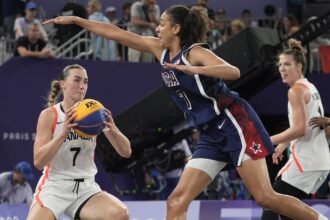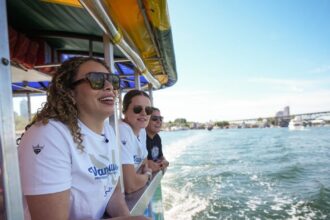The scorching Okanagan summer has produced something even hotter than the valley heat – a remarkable crop of young track stars who are blazing their way into the provincial record books. Last weekend, in a display of raw talent and disciplined training, the Okanagan Athletic Club’s youth sprinters established themselves as the undisputed speed merchants of British Columbia.
When 13-year-old Marcus Delray crossed the finish line at the provincial championships, the electronic timing board confirmed what many local coaches had whispered all season – the Okanagan is nurturing a generation of exceptional athletic talent. Delray’s time of 11.32 seconds in the 100-meter dash not only secured him gold but placed him among the fastest age-group sprinters in the country.
“What we’re seeing isn’t just about natural ability,” explains Jessica Winters, head coach at the Okanagan Athletic Club. “These kids are redefining what commitment looks like at such a young age. They’re on the track when it’s 30 degrees, when it’s raining, when their friends are at the beach. That’s the difference-maker.”
The club’s dominance extended beyond individual performances. Their 4x100m relay team, featuring Delray alongside teammates Aiden Parsons, Kai Chen, and Tyler Morissette, shattered the provincial record with a time that would have qualified them for national competitions in older categories. Their seamless baton exchanges, perfected through countless practice sessions, showcased technical excellence rarely seen in competitors this young.
This success represents a significant shift in British Columbia’s athletic landscape. Historically, coastal programs have dominated track and field, benefiting from milder year-round training conditions and larger population bases. The emergence of the Okanagan as a sprint powerhouse speaks to the region’s growing sports infrastructure and coaching expertise.
“We’ve been building this program methodically for five years,” notes William Calder, the club’s founder. “It started with creating the right training environment, bringing in coaches with national-level experience, and then implementing development systems that work for young athletes specifically. We’re not just copying what works for Olympians and scaling it down.”
The club’s approach includes innovative training methods that particularly benefit young athletes still developing physically. Rather than emphasizing weight training, coaches focus on plyometrics, form development, and race strategy – elements that maximize natural ability while minimizing injury risk.
Parents have noticed benefits extending well beyond the track. “My daughter’s confidence has transformed completely,” shares Marina Levesque, whose 14-year-old Sophia captured silver in the 200m. “The discipline she’s learned here applies to everything – school, relationships, how she approaches challenges. It’s been life-changing.”
What makes these achievements particularly impressive is the relative resource limitations these athletes face. While coastal clubs often train in state-of-the-art facilities year-round, Okanagan athletes contend with snowy winters that push training indoors for months. Rather than viewing this as a disadvantage, coaches have transformed it into strength-building opportunities, focusing on elements often overlooked in year-round outdoor programs.
The Okanagan Athletic Club’s success has caught attention beyond provincial borders. Several national team scouts attended the championships, eyeing the young talent for future development programs. For a region traditionally known for hockey and winter sports excellence, this emergence of summer sport champions represents a broadening of the athletic identity of the entire valley.
As these young athletes return to training following their championship performances, the focus has already shifted to what comes next. “Provincial dominance is just the beginning,” says Coach Winters. “We’re building athletes who can compete nationally and internationally in the coming years.”
For the communities throughout the Okanagan, these young champions represent something more than athletic achievement – they embody the potential that exists when talent meets opportunity in unexpected places. In a sports landscape often dominated by major urban centers, these sprint sensations are proving that tomorrow’s champions can emerge from anywhere, including right here in our valley.
For more coverage on cultural shifts in sports and youth development, visit our CO24 Culture and CO24 Trends sections, where we explore how athletic achievement intersects with broader social movements.

























